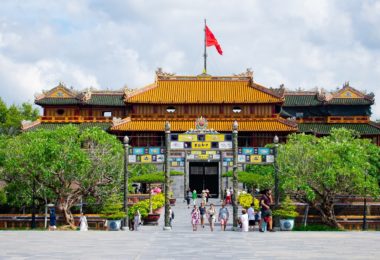Understanding Vietnamese Calligraphy: A Cultural Treasure
What is Vietnamese Calligraphy (Thu Phap)?
Vietnamese Calligraphy is at the heart of Vietnamese Calligraphy is the ability to write beautifully formed characters, each representing a calligrapher’s émotions, intelligence, and passion. “Thu Phap” translates as “the rule of writing” which emphasizes technique, accuracy, and artistic dépassement. But this is not simply any writing, it is a living art form that retells stories, imparts blessings, and links generations.
While Western calligraphy is based on perfecto lettre with strict ratios, Vietnamese Calligraphy is all about feeling and freedom. Writing with a brush is a flowing process, the brush strokes words that are also visual poetry, each character a constellation, a self-contained universe harboring the thoughts and feelings of the artist. Therefore, it leads to the fact that Vietnamese Calligraphy is an intimate and spiritual art which praises the soul and characteristics of the person who writes it.
The Cultural Significance of Vietnamese Calligraphy
What is the reason for the preciousness of Vietnamese Calligraphy? The reason is that it so encapsulates the Vietnamese culture and history, patience, wisdom, and beauty. Each brushstroke is a meditation, and teaches the calligrapher the importance of focus and a calm mind. It is a way to protect cultural heritage as well, since several calligraphic booklets carry proverbs, poems, and lessons from Vietnamese literature.
Vietnamese Calligraphy, however, is not only an art form – it is a living tradition, and it connects with all people. Families look for calligraphy with words of blessings such as “Phuc” (Happiness), “Loc” (Wealth), “Tho” (Longevity) for Tet (Lunar New Year). These calligraphic works grace homes to bring good fortune and good energy for the new year.
Outside Tet, calligraphy is found in temples, on decorative scrolls, and as treasured gifts. It’s a signal of cultural wealth, a celebration of wisdom, and a translator between bygone and modern times.
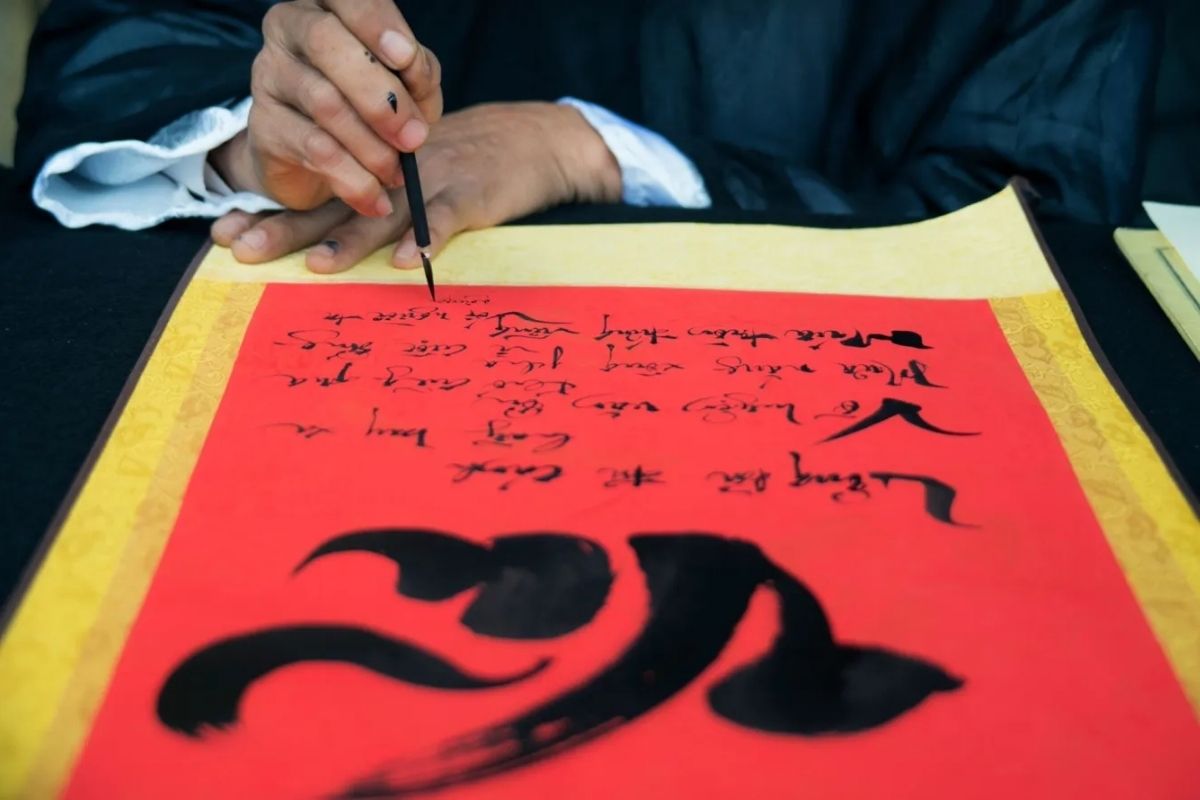
Vietnamese Calligraphy (Source: vietnameseprivatetours)
Types of Vietnamese Calligraphy
Vietnamese Calligraphy is an integral aspect of Vietnamese culture, and it is a form of art that has developed across three prominent styles, reflecting the artwork’s colourful past:
1. Han-Nom Calligraphy (Traditional Chinese-Vietnamese Script)
-
- This is the oldest of the Vietnamese Calligraphy and has a strong Chinese calligraphy influence. It is written using the Chinese characters in Han, and Nom, a script of Vietnamese developed to write the Vietnamese language.
- Han-Nom calligraphy is recognized for its symmetry and balance within each stroke, every line carrying hundreds of years of cultural history.
2. Quoc Ngu Calligraphy (Latin-based Vietnamese Script)
-
- The Vietnamese script was originally based on Chinese script, and as Vietnam switched to the Latin alphabet for documentation in the 20th century, calligraphy followed it too. This contemporary style utilizes the legible English alphabet but retains the calligraphic and artistic appearance of traditional brush calligraphy.
- It is loose, free, and easy that is available to the young teens who are on trend to mixed the old art with the modern art.
3. Modern Vietnamese Calligraphy (Innovative Styles)
-
- In recent years, a contemporary Vietnamese Calligraphy has come into being, it inherits the traditional techniques with an open mind to the modern artistic expression. In a movement called “Tien Ve” (Avant-Garde Calligraphy), artists liberate themselves from what had become a conventional medium, transcending the literal to create abstracted designs.
- Many of these works by contemporary artists combine calligraphy and painting, using not only ink and paper but also digital, vivid colors and unconventional materials.
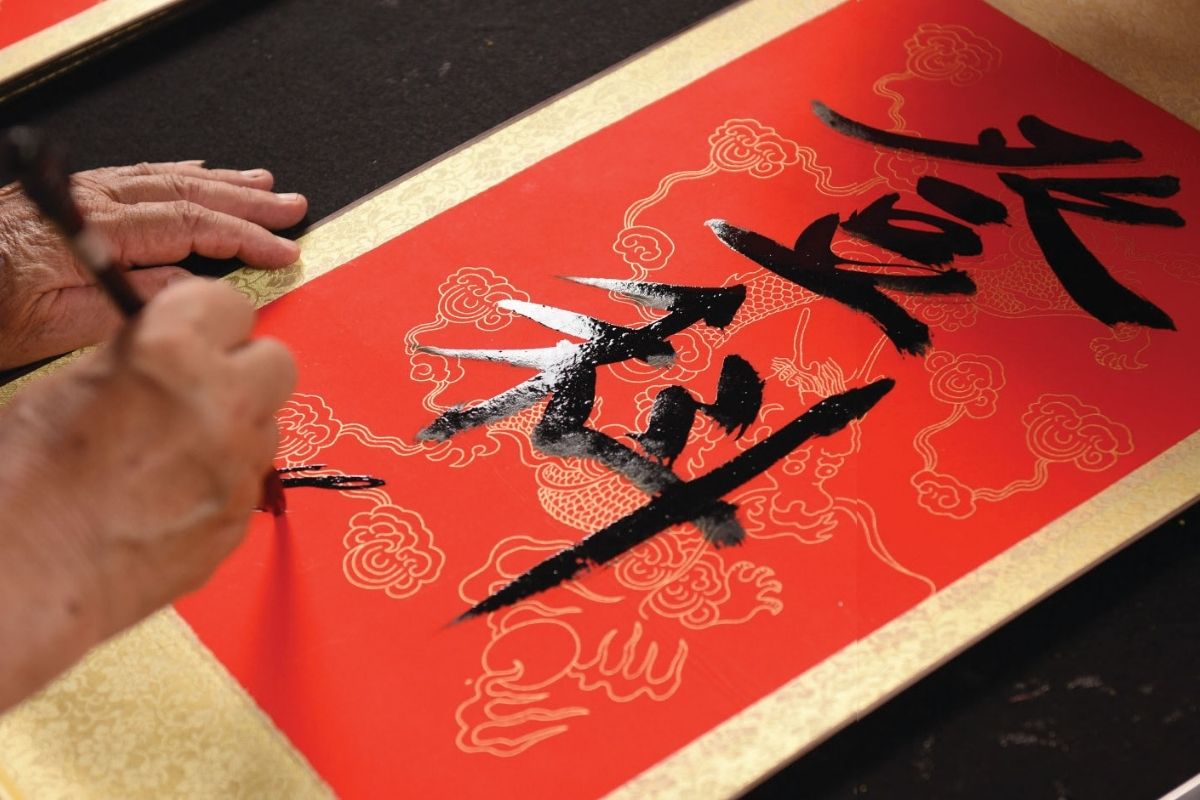
Han-Nom Calligraphy (Source: vnu)
A Journey Through History: The Evolution of Vietnamese Calligraphy
Origins: The Influence of Chinese Calligraphy
Let’s begin at the beginning! The history of Vietnamese Calligraphy goes back 2000 years ago when Vietnam was a Chinese province. It was during this time that the Chinese writing (Han) arrived in Vietnam, followed by the artistic, disciplined manner of traditional calligraphy. Vietnamese learnt it and soon made it their own, mastering the rule of writing: the stable line, rounded forms, and balanced compositions of Chinese calligraphy.
But for the Vietnamese Calligraphy was never as simple as copying Chinese characters. It was a form of communicating the wisdom, the spirit, and the cultural significance of Vietnam. The beauty of the Han characters turned into a philosophy, music, and poetry language, which has made Vietnamese Calligraphy a type of civilization.
The Rise of Nom Script: Vietnam’s Unique Creation
But the Vietnamese spirit could not be constrained by the rigid shapes of Chinese characters. Like their language, the Vietnamese script developed over time. Vietnamese scholars were creating a native Vietnamese Scripture, Chu Nom, using adapted Chinese script to depict the native Vietnamese language.
This was a historic breakthrough through a script that spoke to the Vietnamese spirit. It also became a possession for poets, scholars, and literati who could write their thoughts and feelings down in a manner that was unambiguously Vietnamese.
Representing the finest and most iconic example of the Vietnamese oral-writen tradition of Nom is “Truyen Kieu” by Nguyen Du, a national epic poem that harmoniously married poetry with calligraphy. Thanks to Nom, Vietnamese figurative wordplay poets were able to write about love, loyalty, wisdom, tenacity, and much more, leaving us a precious legacy of Vietnamese symbolism to this day.
The Transition to Quoc Ngu (Latin Script)
As we move through time, our story gets more interesting by the 17th century when European missionaries came to Vietnam. Barely able to cope with the tortuous language of the Nom script, they eventually invented a writing system based on the Latin alphabet, Quoc Ngu, the Vietnamese script used now.
Quoc Ngu was initially used for religious documents and by the 20th century had become the script employed throughout Vietnam. But here’s the cool thing: instead of fading away, Vietnamese Calligraphy evolved again. Calligraphers started to use the Latin alphabet to produce amazing art by taking traditional brush techniques and applying the elements to the clean and modern lines of Latin letters.
Quoc Ngu Vietnamese Calligraphy was a manifestation of cultural resilience, an affirmation that Vietnamese art can adapt, evolve, and flourish in any era. This new form had freedom and expression, and poetry, and was made more available to another generation of artists.
Modern Vietnamese Calligraphy: A Blend of Tradition and Innovation
But the story of Vietnamese Calligraphy has not ended. Today, in the contemporary age, this old art has acquired new perceptions, marrying the past with the future. One of the most thrilling things about calligraphy is Tien Ve (Avant-Garde Calligraphy), a form of modern calligraphy in which anything goes.
The artists at Tien Ve don’t just write, they paint, they splash, they sculpt with ink. They employ digital tools, bright colors, and alternative mediums to produce calligraphy that is bold, abstract, and full of vigor. These contemporary pieces testify how alive and kicking Vietnamese Calligraphy has become, expressing the creative freedom.
In the current era, some notable masters include calligraphers such as Nguyen Thanh Tung, who integrates traditional techniques and modern fashion, and Trinh Tuan, who is known for his striking colours and abstract forms. These artists are not particularly concerned about preserving tradition; they are about re-inventing it, telling us Vietnamese Calligraphy is a live, evolving art.
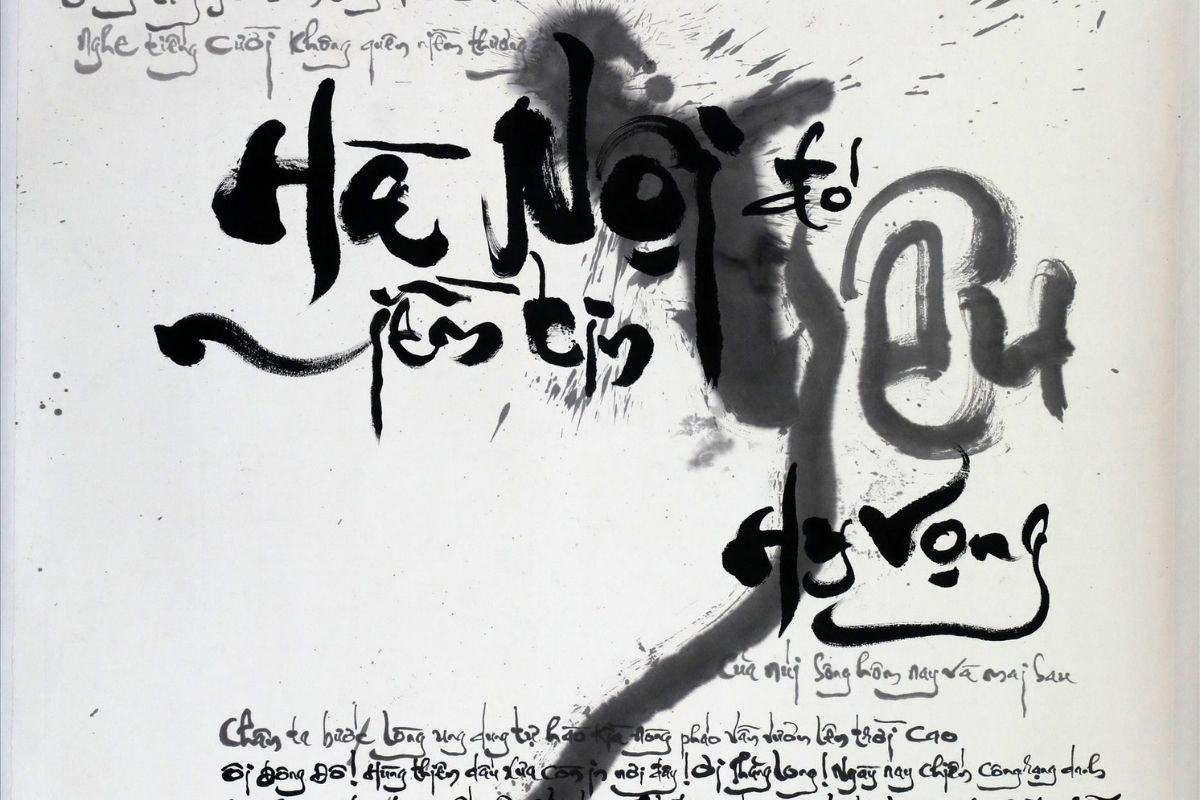
Modern Vietnamese Calligraphy (Source: vnanet)
Techniques and Tools of Vietnamese Calligraphy
Essential Calligraphy Tools: The Four Treasures
Four treasures of the Study or the Four Friends of the Study are four tools that one needs for calligraphy, the most popular ‘fine arts’ in Vietnam, and of course, the 3 remaining tools. Four Treasures, the crux of this ancient practice:
- The Brush (But Long): It is the Harry Potter wand of calligraphers. Constructed of bamboo with bristles of animal hair of varying types (wolf for precision, goat for soft strokes), the brush becomes an infinitely useful device. It’s the way you hold the brush, the pressure you apply, the angle you use, that gives the characters that style and that emotion.
- The Ink (Muc): Dark, black as midnight, rich and deep: the ink is the soul of Vietnamese Calligraphy. Originally based on an ink that was made from soot with the addition of natural glue, the ink stands for wisdom, thinking, and creativity. A real calligrapher knows how to manage the ink, from barely there gray to midnight black.
- The Paper (Giay): This is the medium where dreams materialize. Vietnamese Calligraphy is usually written on rice paper, which is thin, absorbent, and ideal for intricate strokes. For the festive Tet holiday, which falls on Tuesday, they use bright red paper, which symbolizes good luck and prosperity.
- The Inkstone (Nghien): Is not just a tool – it feels like the spirit of the inkstone is the spirit of patience and focus. Using the inkstick and water, the calligrapher grinds the solid ink to liquid ink on the inkstone, doing so calms the mind and helps them focus on the task of painting, drawing, or writing.

The Brush (Source: kaizen)
Mastering the Basic Techniques of Vietnamese Calligraphy
Now that you know the tools, let’s learn the techniques! Vietnamese Calligraphy is not only the writing – it is a dance of the brush, a symphony of lines! Here’s how real calligraphy happens:
- Understanding Brush Pressure: Light pressure renders delicate, graceful lines, and heavier pressure results in bold, dramatic strokes. Therefore, learning to balance between these is the secret to animating believable and expressive characters.
- Controlling Ink Flow: The right amount of ink is key. And too many, and your strokes will bleed; too few, and they will fade. A real calligrapher can achieve a consistent pace, resulting in a fluid, uninterrupted feel.
- Perfecting Stroke Styles: Every character in Vietnamese Calligraphy consists of the fundamental strokes, such as horizontal, vertical, diagonal, hook, and curve. Each movement needs to be smooth, accurate, and purposeful.
- Maintaining Balance and Harmony: If the Vietnamese Calligraphy is beautiful, it is because it is balanced. They must be symmetrical letters with strokes symmetrically and proportionately divided on the long staves so that natural balance results.
Where to Experience and Learn Vietnamese Calligraphy: Detailed Guide
Top Places to Learn Vietnamese Calligraphy in Hanoi
Temple of Literature (Van Mieu – Quoc Tu Giam)
- Address: 58 Quoc Tu Giam, Dong Da District, Hanoi
- Opening Hours: 8:00 AM – 5:00 PM (Daily)
- Why Visit: The Temple of Literature is Vietnam’s oldest university and a place of worship for scholars. In the time of Tet (Vietnamese Lunar New Year), this is the place to be for calligraphy. In Tet all the courtyard of the temple becomes a calligraphy market, where you can see many master calligraphers with brushes and ink making beautiful Vietnamese Calligraphy on red paper. On-site, visitors can see calligraphers in action, ask for custom works, or buy ornate calligraphy scrolls as a good luck charm for the new year.
Backstreet Academy Hanoi
- Address: 26 Hang Voi, Hoan Kiem District, Hanoi
- Workshop Hours: 9:00 AM – 6:00 PM (Booking Required)
- Why Visit: For a hands-on experience, Backstreet Academy has an intensive, hands-on Vietnamese Calligraphy workshop led by calligraphy masters. Discover the fundamentals of how to use your brush, control ink flow, and character composition in a warm, creative environment. Make your calligraphy art for a unique souvenir to bring home with you.
Calligraphy Club at Temple of Literature (Van Mieu)
- Address: Inside the Temple of Literature, 58 Quoc Tu Giam, Dong Da District, Hanoi
- Workshop Schedule: Usually held on weekends (Check with the temple office for updated times)
- Why Visit: The club seeks to maintain the beauty of the traditional Vietnamese Calligraphy, especially in ancient writings of Han and Nom characters. Here, you can watch calligraphers at work, join a workshop, or commission a custom calligraphy piece.
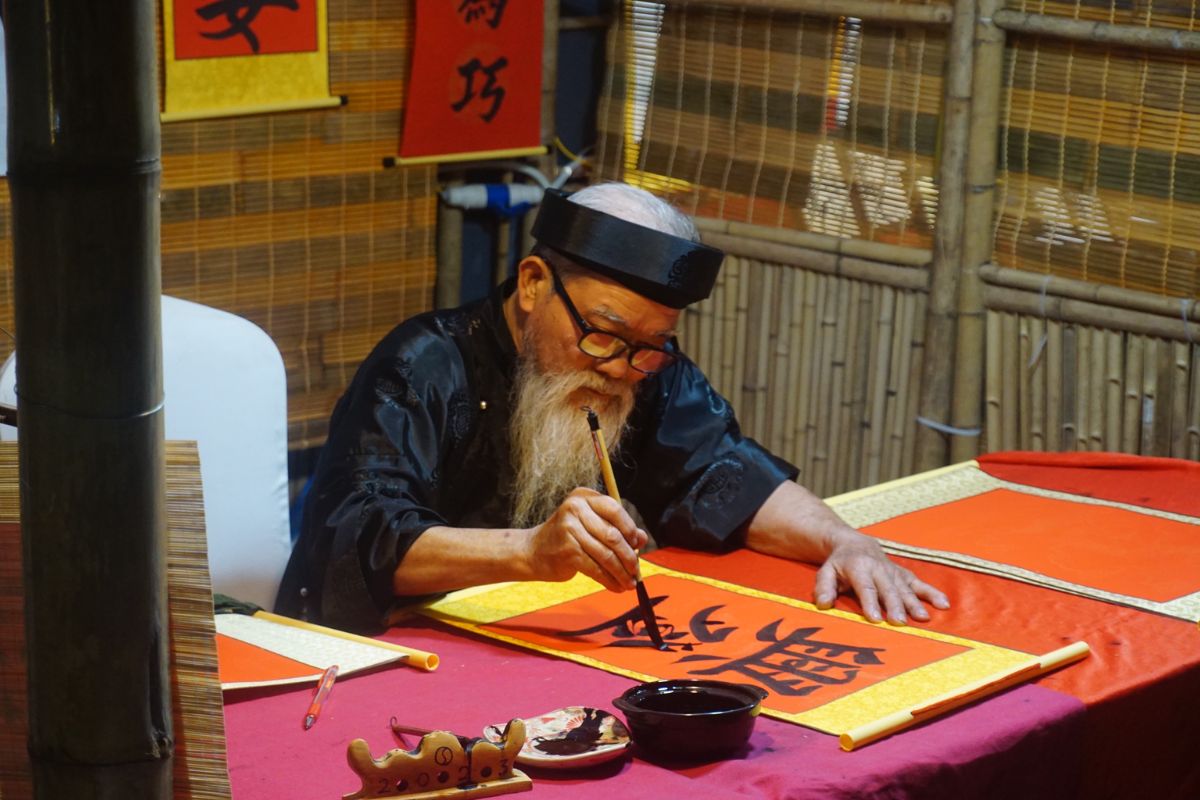
Temple of Literature (Source: bld)
Top Places to Learn Vietnamese Calligraphy in Ho Chi Minh City
Calligraphy Street (Pho Ong DO) – Nguyen Hue Walking Street
- Location: Nguyen Hue Walking Street, District 1, Ho Chi Minh City
- Best Time to Visit: One week before Tet (Lunar New Year) until the end of the festival
- Why Visit: The glorious calligraphy street is an absolute wonder during the Tet holiday. They sell many dozens of calligraphers in their Au Dai (traditional Vietnamese dress), tempting the customers with stunningly formed VietFonts in beautiful paper. Select from traditional characters like Phuc, Loc, Tho, or commission a custom piece written for you.
The Craft House Flagship (District 1)
- Address: 53A Nguyen Du, Ben Nghe Ward, District 1, Ho Chi Minh City
- Workshop Hours: 10:00 AM – 8:00 PM (Booking Required)
- Why Visit: It’s a new venture to promote modern Vietnamese Calligraphy in a chic and cool space. The Craft House holds beginner-friendly workshops that teach you how to handle brushes, write your name in calligraphy, and even study the culture behind each character.
Thu Phap Gia Nguyen – Master Nguyen’s Calligraphy Studio
- Address: 98 Tran Ke Xuong, Ward 7, Phu Nhuan District, Ho Chi Minh City
- Workshop Hours: 9:00 AM – 6:00 PM (Booking Required)
- Contact: +84 903 383 017
- Why Visit: Master Nguyen is a famous calligrapher with expertise in traditional Vietnamese Calligraphy (Han and Nom) as well as modern Calligraphy. His studio provides custom artwork and personalized calligraphy lessons. Guests can also buy special calligraphy gifts.

Thu Phap Gia Nguyen (Source: thuphapgianguyen)
Conclusion
Vietnamese Calligraphy is not only an art but also the lifeblood of Vietnamese culture and history, from ancient to the present, it remains the convergence of tradition and creativity. Whether you’d like to appreciate the graceful, traditional strokes of Han and Nom or the more contemporary, flamboyant strokes of modern Vietnamese styles, this ancient art offers you the facilities to explore, experience, and create. So, when on your way to Vietnam, chance to see this cultural gem firsthand. Ready to dive deeper? Learn more about Vietnamese culture and history.











































